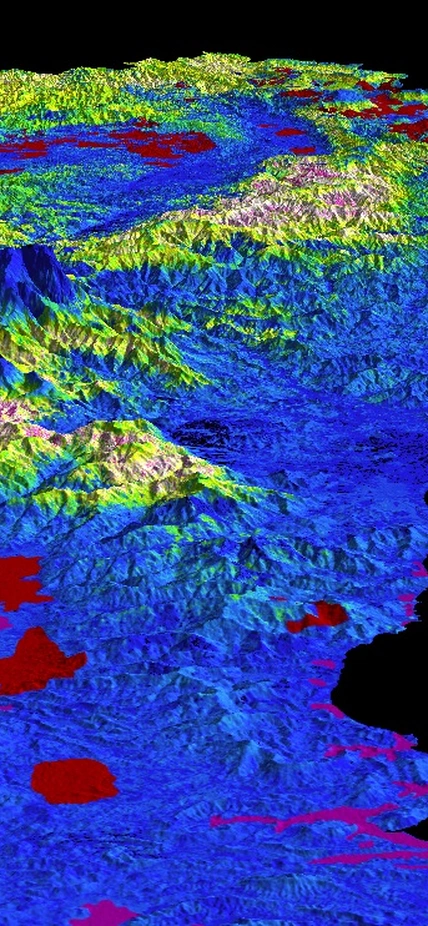Washington, DC— About 40 percent of northern Malaysian Borneo’s carbon stocks exist in forests that are not designated for maximum protections, according to new remote sensing and satellite mapping from Carnegie’s Greg Asner and his colleagues.
Asner’s flying laboratory, the Carnegie Airborne Observatory, was able to map carbon stocks that—together with satellite imaging and other geospatial data—will guide conservation efforts undertaken by the Sabah Forestry Department in Malaysian Borneo, the Southeast Asia Rainforest Research Partnership (SEARRP), the PACOS Trust, BC Initiative and other organizations.
“We are proud to be part of this groundbreaking endeavor in the state of Sabah, which sets us apart in accelerating the quest and capacity to protect, restore, and conserve more high-conservation and high-carbon forests in this country,” said Sam Mannan, Chief Conservator of Forests. “We shall apply the information gathered for the common good of society, particularly, in mitigating against the worst effects of climate change. This project is of immense value to tropical forest management.”
Why is measuring carbon stocks so important?
Because tropical forests like those in the Sabah have converted large quantities atmospheric carbon into organic material—and they accomplish more of this than any other terrestrial ecosystem on Earth. But when this forest land is repurposed for agriculture, logging, or mining, carbon is released into the atmosphere, where it contributes to climate change. Tropical deforestation and forest degradation account for about a tenth of the world’s carbon emissions each year.
So, figuring out which segments of Sabah’s forests contain the most carbon in the form of biomass is an important first step in helping the government of the Sabah meet its goal of increasing protected forests from 1.8 to 2.2 million hectares.
“The nearly 4 million hectares of Sabah’s forests are a kaleidoscope of many different habitats and management histories, which required a wall-to-wall mapping effort to truly quantify the amount of carbon they contain,” Asner explained.
Using the Carnegie Airborne Observatory’s signature technique, called airborne laser-guided imaging spectroscopy, integrated with satellite imaging, and other geospatial data, Asner and his team were able to provide high-resolution maps of Sabah’s forests. In addition to finding 50 trees of the tallest tropical trees ever measured, the CAO team pinpointed important targets for conservation efforts.
They found that about 40 percent of the state’s carbon is contained in forests that are not protected at the highest designation. What’s more, they discovered that Sabah could double carbon stocks by allowing previously logged forests to regenerate—a process that they estimate would take about a century.
SEARRP’s Glen Reynolds said: “it’s a rare opportunity to work with state-wide datasets of this quality. By integrating the CAO maps with ground-based biodiversity data and information on the use of forests by local people, we should be uniquely well placed to identify hundreds of thousands of new conservation areas in Sabah that not only protect key habitats, but also the livelihoods of forest-dependent communities”.
“Forest carbon is an important factor in locating places where conservation efforts could make the greatest impact,” Asner added. “But other data on canopy biodiversity and animal habitats, such as our work on Bornean orangutans, will also help inform decisionmakers.”
Top Image Caption: Maps show the density of aboveground carbon stocks in the Sabah state of Malaysia on the island of Borneo. Mapping forest carbon is an important step in identifying areas for conservation, but is tremendously difficult to accomplish without airborne and satellite technology.
__________________
This study was supported by the UN Development Programme, Avatar Alliance Foundation, Roundtable on Sustainable Palm Oil, Worldwide Fund for Nature, Morgan Family Foundation, Natural Environmental Research Council, and the Rainforest Trust.
